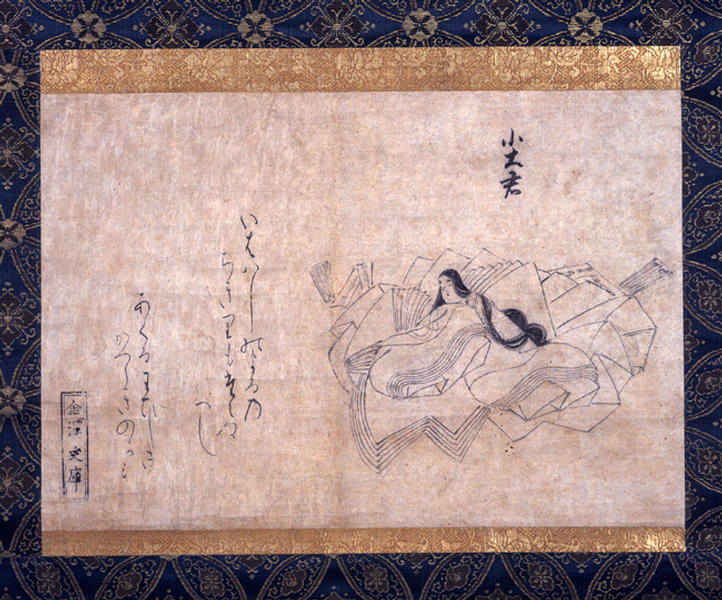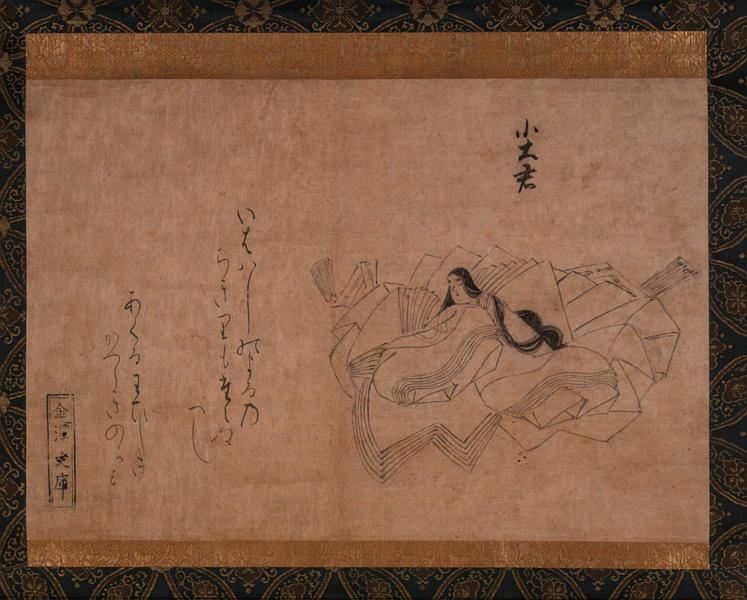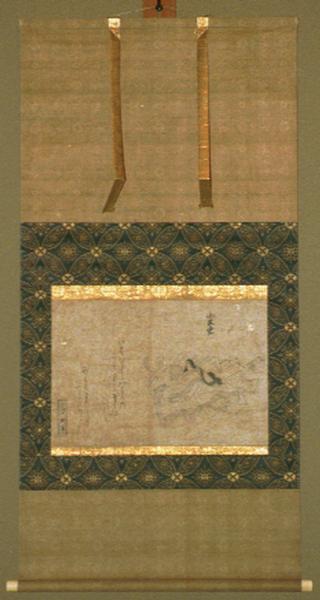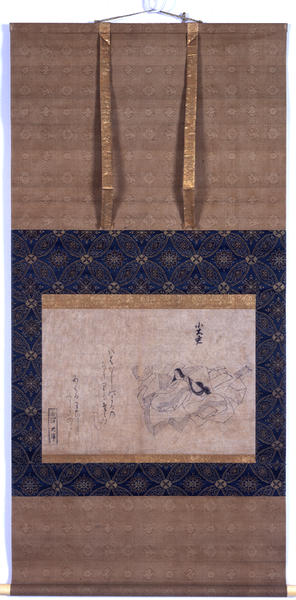小大君像 為家本三十六歌仙切
- 鎌倉時代
- 14c
- 紙本墨画(白描)
- H-29.1 W-43.1
- 所蔵
- 金沢文庫
解説(開館1周年記念展)
彩色を施さない墨線のみによる白描画で,円融天皇の中宮女皇子,のちに三条院に仕えた女流歌人小大君を描いた歌仙絵の断簡である。11世紀初頭の藤原公任による「三十六人選」に影響を受けて誕生した歌仙絵は,鎌倉時代の似絵の勃興に伴いおおいに隆盛した。
本作も顔貌は伝統的な大和絵の引目鈎鼻だが,衣紋の描き方などとともに,当時流行した写実的な似絵の画風が見られる。書画ともに藤原定家の次男である為家の筆とされているが,確証はない。白描画は墨の面的表現を重視する水墨画に比べ,筆の線的表現に主体がおかれているため,作者の技量や描き出す対象に向ける心象が端的に現れやすいが,本作は線描による襲の表現が像全体に静かでリズミカルな旋律を与えている。
いわはしの よるのちきりも たえぬへし
あくるわひしき かつらきのかみ
(拾遺和歌集第十八巻)
Catalogue Entry
This work is an uncolored line drawing, taken from a scroll of the Thirty-six Poets. This image depicts Ko-ogimi, daughter of Emperor En'yu (r. 969-984), who served Emperor Sanjo (976-1017, r. 1011-1016) after he yielded his throne. Portraits of the thirty-six master poets began in the beginning of the 11th century when Fujiwara no Kinto (966-1041) compiled a collection of poems called Sanjurokuninsen (Selections from Thirty-six Poets), and painting these poets became quite popular during the time of prevailing interest in portrait painting.
The present work follows the tradition of yamato-e in that the subject is depicted with hikime-kagihana (slit eyes and a hook nose), but, at the same time, it embodies a taste for realistic portrait painting, especially in the treatment of her clothing, that was enormously popular at the time. Both the drawing and the calligraphy are attributed to Fujiwara no Tameie (1198-1275), the second son of Fujiwara no Sadaie (1162-1241), but proof is yet to be found. Line drawing places more importance on the expression of brush lines in contrast to suibokuga (ink paintings), which concern themselves more with expressing spatial planes. As a result, artists' abilities and emotional attitudes toward subject matter manifest themselves more easily through this type of line drawing. In the present work the lines expressing the layers of kimono brings about a peaceful and rhythmical melody to the subject.



